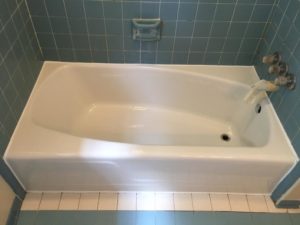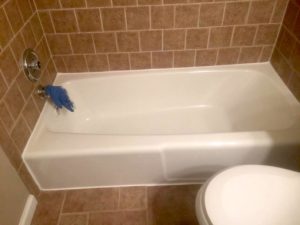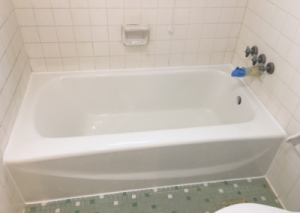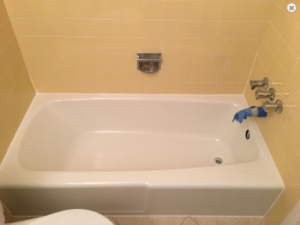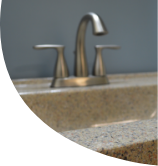3 Ways to Spot a Previously Resurfaced Tub
Contrary to popular belief, it doesn’t take an expert to spot a tub that has been done before, especially if the coating is starting to fail. But most of our customers are stumped by the question, “Has your tub been previously resurfaced?” For all of you first time homebuyers out there, here are some time saving tips when trying to determine if resurfacing work may have been done in your bathroom. Take it from someone who was once a resurfacing novice (we all gotta start somewhere), if you are considering resurfacing your tub in the future it will be important to know if the tub has been done before. More often than not stripping the tub will raise the total price of the project but it is vital to understand that stripping is a necessary step in the process if the tub has been done before. I’ll let you in on a little secret; it’s because the quality of the prep work determines how long the surface will last. And since stripping is considered prep work it is absolutely crucial in order to guarantee strong adhesion to the original substrate. Most companies will even require the tub to be stripped if they are inclined to honor any sort of warranty. So be sure to let your resurfacing professional know if you suspect your tub may have been previously resurfaced.
Peeling, Chipping, Flaking
One the the easiest ways to tell if a tub has been previously resurfaced is to look for any peeling, chipping, or flaking. And you may be wondering, “Why is my bathtub peeling?” Much like old paint, the resurfacing coating, can start to wear with age. And once the deterioration begins it is important to have the tub touched up or the damage will only continue to spread. In some cases the color of the original tub may start to show through, typically on the bottom of the tub. However, it is most common for tubs to start to peel, chip, or flake near the drain or overflow plate so keep an eye on these areas for signs of deterioration. If you are still unsure whether or not your tub has been previously resurfaced take a look at these pics and compare with your own bathtub.
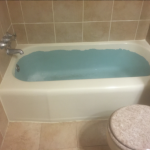
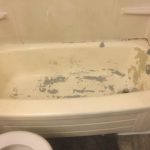
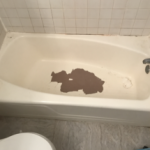

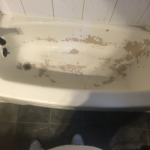
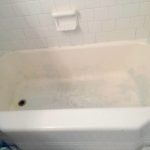
The Drain is Painted
Drain covers are only sold in metal finishes; chrome, brushed nickel, bronze, etc. so if you see a tub with a white drain cover then 9 times out of 10 the tub has been previously resurfaced. As part of their process some companies just leave the drain cover in place and paint over it. But it begs the question, What are you trying to hide by covering the drain cover? Rust? Corrosion? Also, tub resurfacing coatings do not bond to metal surfaces so the first place the coating will fail is on the drain. And if you’ll notice two of the three pics the coating on the drain is chipped. So if you are considering having your tub resurfaced be sure to check with the resurfacing company you hire to see what their process entails. And communicate your preference ahead of time. If your tub’s drain is the same color as the tub, and you notice any peeling, chipping, or flaking then chances are your tub has been previously resurfaced.
***The CT&T process does not include painting over the drain cover. It is masked and protected from spray if you would like to keep your existing one. Or we can replace it with a new one if preferred.***
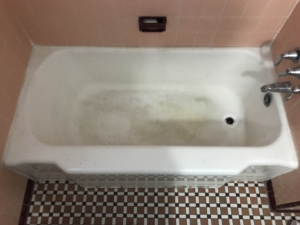



The Tub Is A Different Color Than The Walls
In some older bathrooms the tub, tile walls, and floor will be the same color. Usually in the retro 60’s powder blue, yellow, or brown. And in some cases the homeowners choose to leave their walls and floor in their original form, choosing to just have the tub resurfaced. If you are not the original owner of the home and your bathroom wall tile is a different color than the tub than the tub has probably been resurfaced. Even if both the tub and walls are currently white, if they are not the same shade of white, and the tub seems to be brighter and fresher then the tub has been previously resurfaced. Take a good hard look at your tub and tile…are they the same color? Does the tub appear to be a bit brighter and whiter than the rest of the bathroom? That may solve the mystery.
